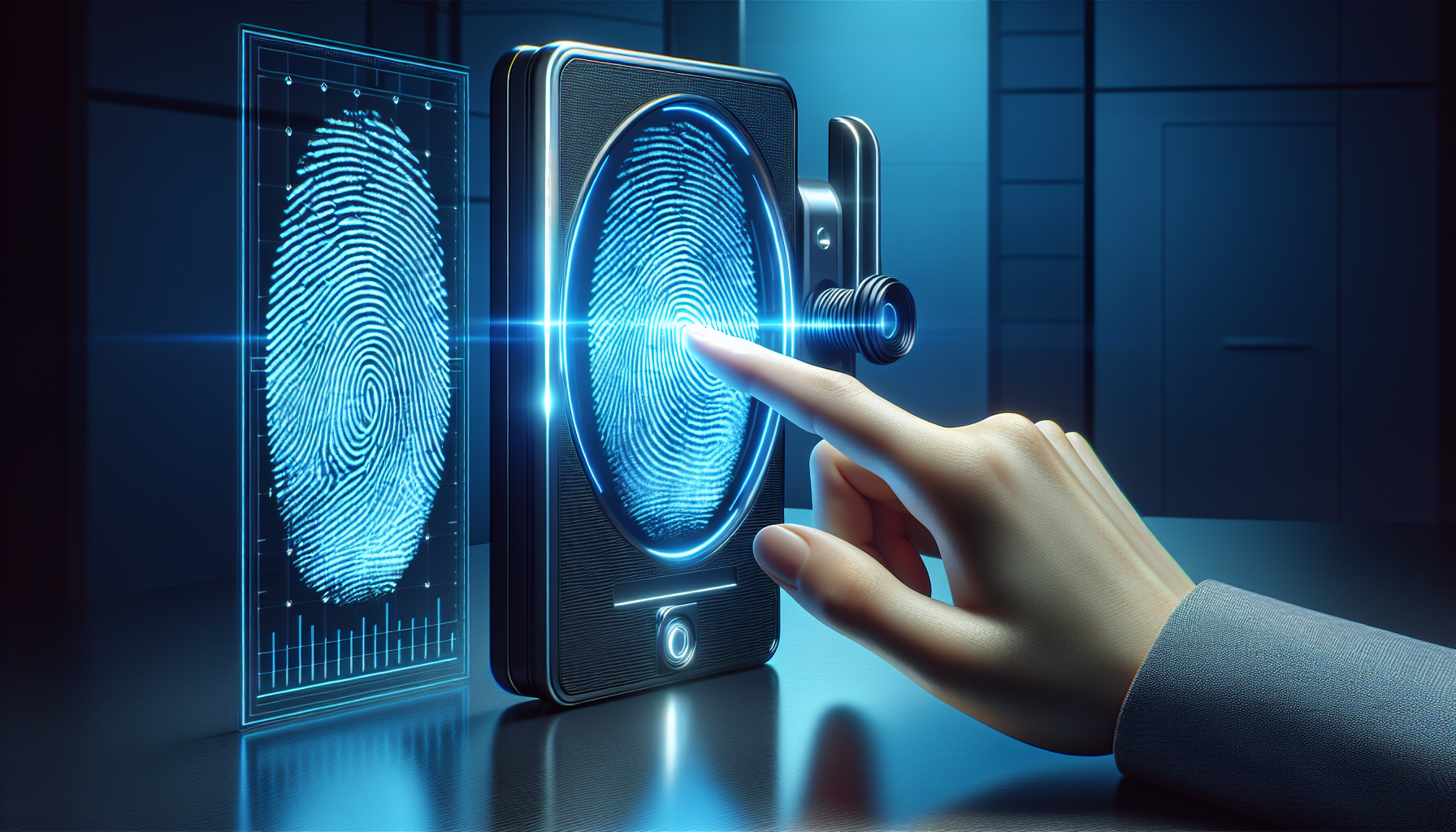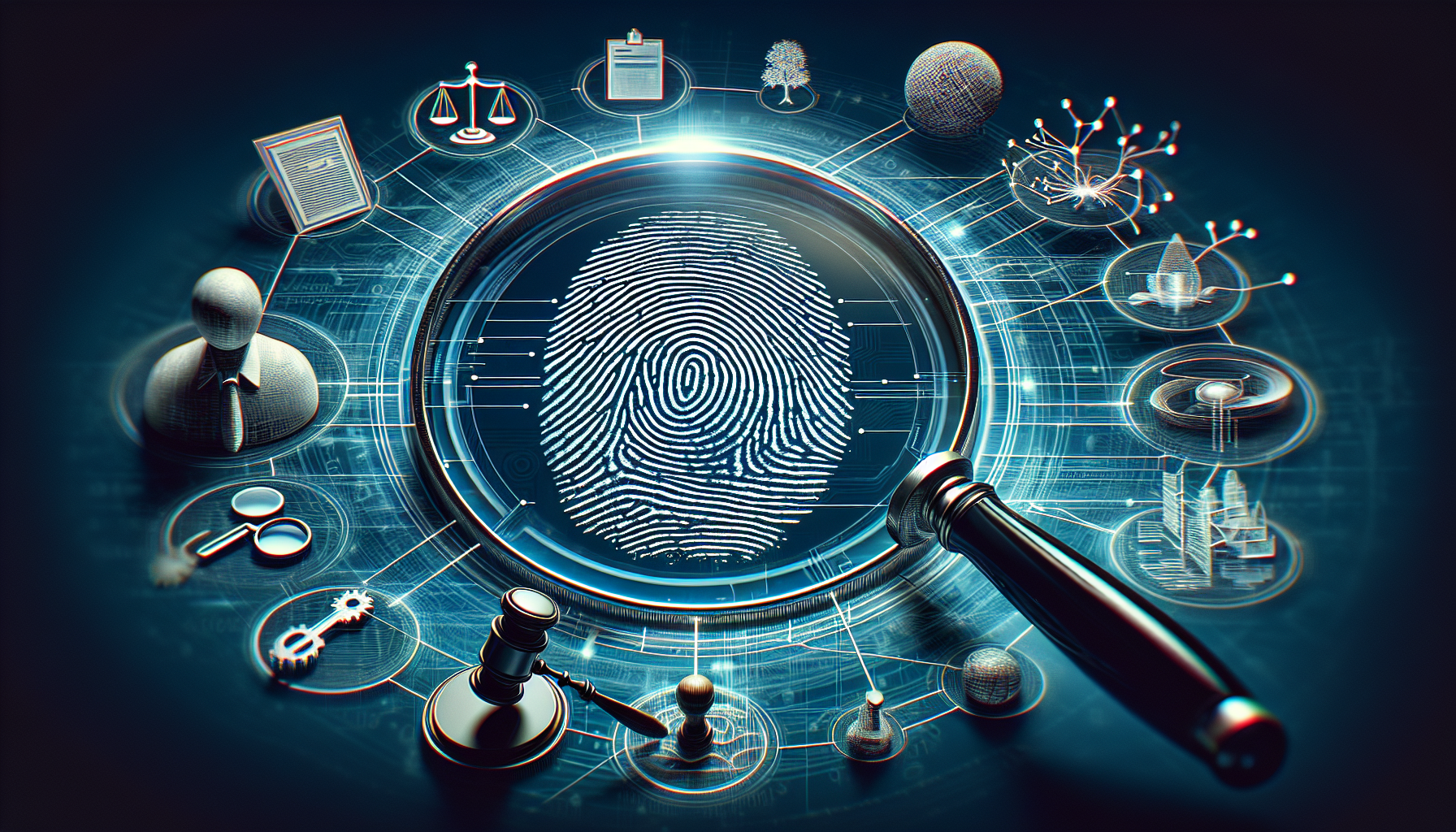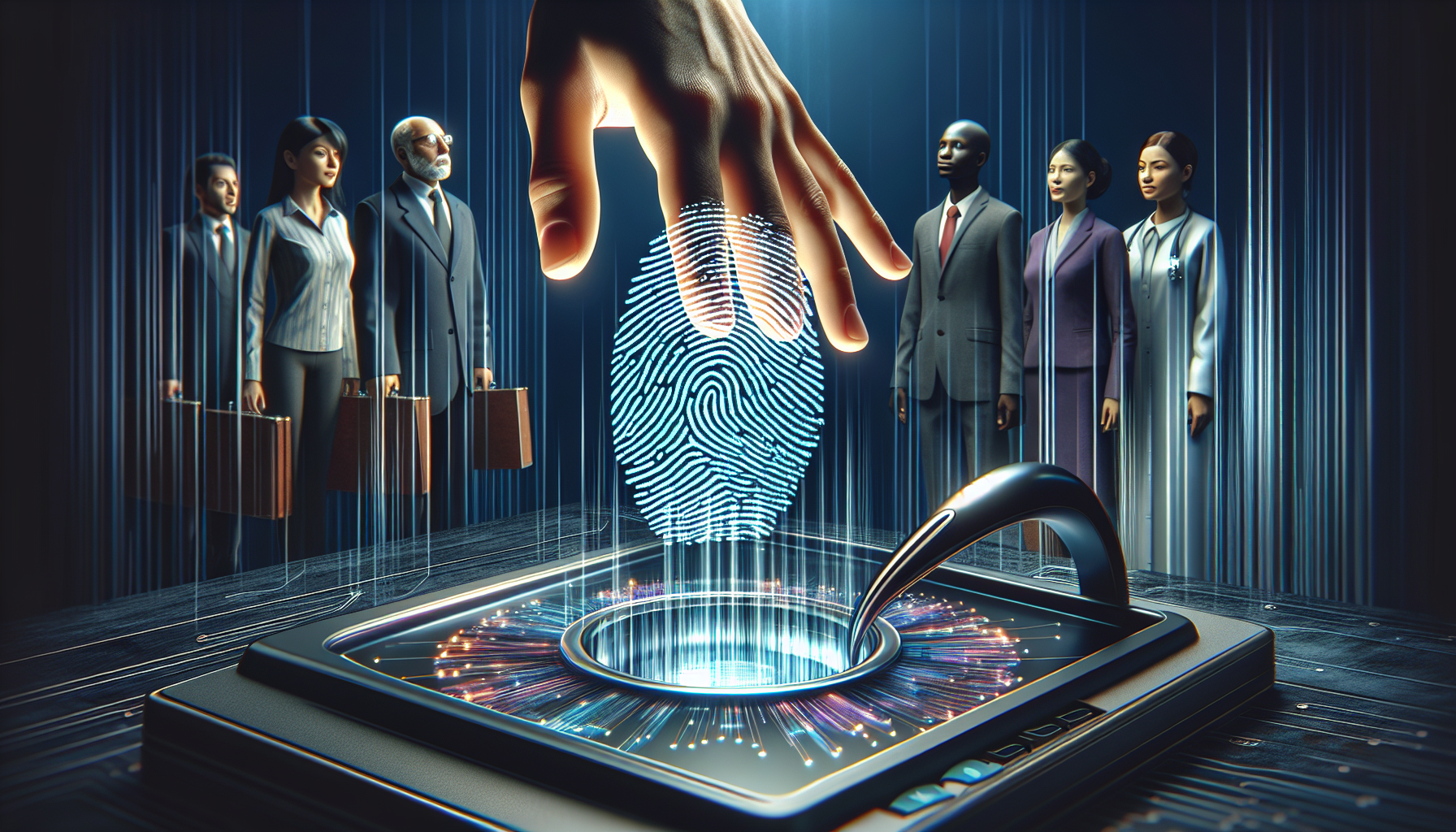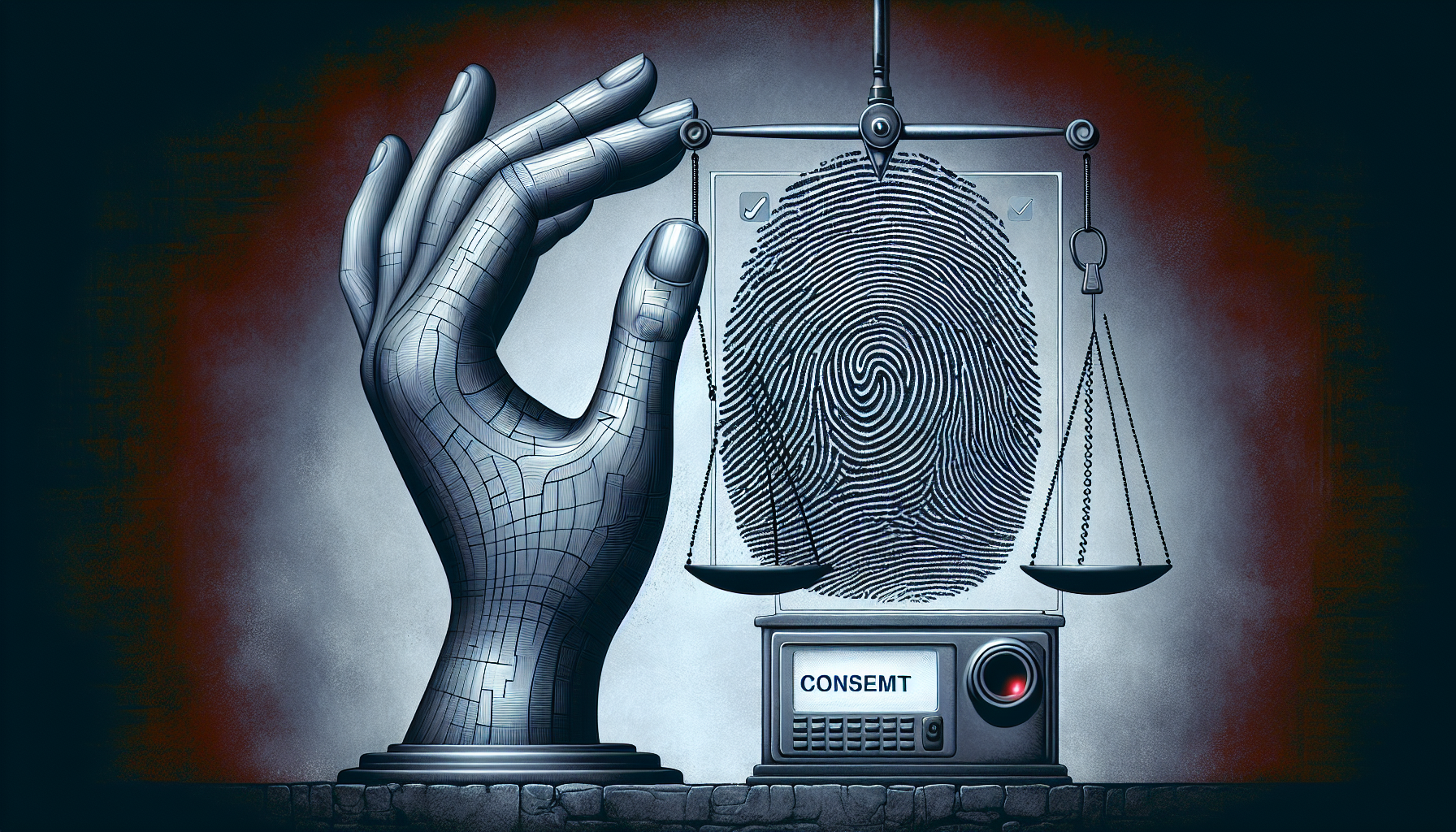Navigating the realm of fingerprint background check can be daunting. You might be curious about what they can reveal or how they differ from other checks. Our no-nonsense guide cuts through the complexity, explaining how these checks use your unique fingerprint to unlock a reliable record of your personal and criminal history. We’ll cover the essential elements such as accuracy, legality, and practical applications in a concise manner, preparing you for what to expect without any unexpected surprises.
Key Takeaways
-
Fingerprint background checks use unique individual fingerprints as identifiers to verify identity and criminal history, offering a more reliable and secure method than traditional name-based checks.
-
The live scan technology used in fingerprinting enhances accuracy, streamlines the background check process, and allows fingerprints to be electronically submitted for comparison against extensive criminal databases.
-
Fingerprint background checks are utilized for various purposes such as employment, licensing, adoption, and housing, providing insights into criminal and civil records, as well as personal and financial information.
The Essence of Fingerprint Background Checks

What sets fingerprint background checks apart is the use of a unique identifier: the fingerprint. The singularity of each individual’s fingerprints makes them a foolproof method for verifying a candidate’s identity and history. From a glance, a fingerprint can reveal a wealth of information about a person, serving as an irreplaceable tool in combating identity fraud.
Professional licensing or certification processes frequently employ fingerprint background checks for accurate confirmation of identity and criminal history. The primary purpose, especially in employment, is to:
-
Verify the identity of the candidate
-
Verify the history of the candidate
-
Eliminate any uncertainties or fallacies that might arise from conventional verification methods.
This background check method offers a strong defense against the increasingly common crime of identity theft. By relying on the unique identifier that a fingerprint provides, it becomes significantly more challenging for fraudsters to deceive the system, ensuring that the integrity of the background check process remains intact.
The Uniqueness of Fingerprints in Criminal History
The uniqueness of fingerprints is the cornerstone of their role in criminal history checks. A fingerprint background check primarily focuses on reviewing a candidate’s criminal background. This process uses the individual’s unique fingerprint patterns to accurately identify them, thereby reducing the likelihood of false matches.
Imagine having an invisible barcode, unique to you, that carries your entire history. That’s essentially what a fingerprint is. It is a unique identifier, ensuring that your criminal history, if any, is accurately associated with you and not confused with someone else with a similar name or date of birth.
Advantages Over Traditional Name Checks
The benefits of fingerprint background checks in comparison to traditional name checks are significant and undeniable. They offer:
-
A more reliable form of identification, reducing false positives and negatives
-
Based on unique individual identifiers rather than common names
-
Makes the process more secure
-
Minimizes the risk of wrongful association with criminal records
Decoding the Fingerprint Background Check Process

The fingerprint background check process, while intricate, is a marvel of technology and efficiency. It begins with the electronic capture of fingerprint data through live scan fingerprinting, which is then transmitted to specific agencies for background checks. This system ensures speed, cleanliness, and accuracy, eliminating the need for cumbersome ink or hard cards.
Upon digitization, the fingerprints undergo the following process:
-
Comparison with extensive databases like AFIS, NCIC, IAFIS, and DHS for potential criminal records.
-
This process provides a comprehensive review of an applicant’s criminal history.
-
It ensures the accuracy and reliability of the results.
From Ink to Electronic: Capturing Fingerprints
Shifting from traditional ink methods to advanced Live Scan electronic fingerprinting has enhanced accuracy and minimized errors in fingerprint collection.
The benefits of Live Scan electronic fingerprinting include:
-
Enhanced accuracy
-
Minimized errors in fingerprint collection
-
Non-contact capture process
-
Error-reduced capture process
Optical scanners in electronic fingerprinting utilize a light source to create a digital image file of the fingerprint, enabling a non-contact and error-reduced capture process, thus capturing fingerprints electronically.
Capacitive sensing, a technique employed in modern electronic fingerprint devices, uses a small electrical current to map the distinctive ridge patterns of a fingerprint, providing precise and reliable data capture. This cutting-edge technology has revolutionized the way fingerprints are captured, ensuring that the data collected is as accurate and comprehensive as possible.
Submitting and Searching Applicant Data
After the fingerprints are collected, they are securely submitted through networks, and electronically forwarded to appropriate agencies such as the FBI for processing. These fingerprints undergo cross-referencing with extensive databases like the FBI’s Next Generation Identification system, employing sophisticated algorithms to identify potential matches.
The duration of a fingerprint background check can be affected by various factors, including the method of fingerprint collection, response times from databases, and the quality of the submitted fingerprints. Live Scan technology significantly streamlines this process by facilitating the electronic transmission of fingerprints directly to systems like the DOJ’s Automated Fingerprint Identification System (AFIS), which accelerates the matching process.
Types of Background Checks Utilizing Fingerprints
Fingerprint background checks serve a variety of purposes and are conducted by organizations for various reasons, including:
-
Adoption
-
Employment
-
Licensing
-
Housing
These checks, also known as FBI background check, can be conducted through the FBI, FBI channelers, or state identification bureaus with the appropriate legal authority. Every year, millions of state-level and federal-level fingerprint-based background checks are processed, reflecting the fundamental role they play in our society.
There are two forms in which fingerprint records can be categorized: criminal and civil. Each form serves a different purpose. It is important to note that individuals can have civil fingerprint records without having been involved in any illegal activity or having an arrest record. These checks can reveal additional details such as credit reports, offering insights into an individual’s financial responsibility.
Employment and Workplace Security
Employment fingerprinting entails capturing an individual’s fingerprints and storing them in a database for identity verification. This is particularly crucial for jobs requiring a high level of trust, as they not only verify a candidate’s identity but also provide a comprehensive view of their history.
Fingerprints for job applications can be captured using traditional ink or through electronic scanning. Industries such as financial services or healthcare often require fingerprinting due to regulated industry standards. In the financial services industry, in particular, expanded use of fingerprint-based background checks is employed to ensure employee identity, enhance customer trust, and gain a competitive advantage.
Particularly in the education system, fingerprint background checks are mandatory for those working with children to assess trustworthiness and mitigate potential risks. Criminal background checks through fingerprinting are vital to evaluate an applicant’s trustworthiness and potential risk to vulnerable individuals.
Licensing and Certification Requirements
For obtaining certain professional certifications or licensing, particularly in transportation and security-sensitive areas, individuals are required to enroll in TSA-related programs like:
-
TSA PreCheck®
-
TWIC® (Transportation Worker Identification Credential)
-
HAZMAT (Hazardous Materials) Endorsement
-
Flight Training Security Program (FTSP)
These programs prioritize public safety and security, and the mandatory fingerprint background checks ensure that only those with clean records handle sensitive roles or tasks.
Comprehensive Insights Gained Through Fingerprint Checks

Fingerprint background checks offer abundant insights into an individual’s criminal history and non-criminal details such as birth, address, employment, vehicle accidents, insurance information, and full name. The use of digital fingerprint templates captured by electronic devices allows for precise analysis and comparison with existing fingerprint databases. Fingerprint background check researches play a crucial role in ensuring accuracy and reliability in these processes.
However, bear in mind that certain crimes may be absent from a fingerprint background check if fingerprints were not collected at the time of the offense, potentially leaving gaps in the recorded history. This highlights the importance of comprehensive background checks that go beyond just fingerprint analysis.
Understanding the RAP Sheet
A RAP sheet, which stands for record of arrests and prosecutions, focuses on the individual’s encounters with law enforcement where they were arrested, fingerprinted, and processed. This report typically encompasses an individual’s arrests, charges faced, the dispositions of those charges, as well as other related criminal history details.
The RAP sheet provides extensive coverage of a person’s interactions with the criminal justice system, including:
-
Arrest history
-
Convictions
-
Court case information
-
Sentences such as incarceration
-
Parole or probation statuses
In the scope of fingerprint background checks, the RAP sheet reveals critical data including:
-
Criminal arrest dates
-
Charges
-
The outcome of the cases
-
Basic personal information such as birthdate, name, address, and sometimes employment data
It serves as a reliable roadmap of an individual’s interactions with the law enforcement system.
Additional Information Revealed
A fingerprint-based background check can reveal a spectrum of information including:
-
Previous criminal arrests and charges
-
Personal details such as birth information
-
Employment history
-
Insurance information
-
Professional history relevant to licensing or employment in certain industries
Employment verification may form part of the insights gained from a fingerprint background check, assisting employers in reviewing a candidate’s work history. Insurance information can be retrieved from a fingerprint background check, which is essential for positions requiring financial trustworthiness.
Beyond an applicant’s criminal history, involvement in non-criminal judicial actions may also surface during a fingerprint background check. Information regarding police reports, vehicle accidents, and insurance details may be associated with an individual’s fingerprint records. A criminal history background check can provide a comprehensive overview of an individual’s past.
Addressing Common Questions About Live Scan Fingerprinting

Live Scan fingerprinting is an electronic process that captures fingerprints quickly, cleanly, and more accurately than the traditional ink-and-roll method. The majority, 80% of the US population, has access to a convenient fingerprinting location within a 30-minute drive, making the background check process more accessible.
Live scan technology maximizes the quality of captured fingerprint images, which helps in reducing the chances of illegible fingerprints that cannot be processed. Sterling’s process is enhanced by having trained technicians who assist candidates in the fingerprinting process, speeding it up and reducing the likelihood of rejections.
The Speed and Accuracy of Live Scan Services
Live scan services offer several advantages over traditional ink methods for fingerprint background checks:
-
Significantly reduce processing time, with a typical duration of 3 to 5 business days
-
Reduce the risk of errors
-
Expedite the process by eliminating paper forms and manual entry
The average wait time for live scan fingerprinting at a facility is approximately 30 minutes, enhancing overall efficiency for individuals. Live scan fingerprinting technology has been modernized, with improvements in customer service and greater accessibility through venues like UPS stores nationwide.
Pricing for live scan fingerprinting services varies depending on the destination agency, and it is recommended to book an appointment to obtain specific cost information.
Privacy and Consent in Fingerprinting

Within the context of fingerprinting, privacy and consent emerge as two major considerations. Live Scan fingerprints are stored at state or federal level databases, which are designed to prevent unauthorized access, thus protecting individual privacy. However, once the background check process is finalized, the digital trail of fingerprints is retained in government databases, raising privacy considerations that must be managed responsibly.
Obtaining consent is a crucial step before conducting a fingerprint-based background check, ensuring compliance with privacy laws and respecting individuals’ privacy rights. This underscores the importance of transparency and communication in the process of conducting fingerprint background checks.
Industry Leader Practices in Fingerprinting
Industry leaders utilize Next Generation Identification (NGI) systems for enhanced fingerprinting, refining the biometric identification process with comprehensive repositories and multimodal biometric functionality. Partnering with industry leaders in fingerprinting offers the benefit of reduced risk and processing time due to the utilization of state-of-the-art technology.
These partnerships are crucial in ensuring the integrity of the background check process and the accuracy of the results. The adoption of advanced technology by industry leaders underscores the importance of continuous innovation in the field of fingerprinting.
State-of-the-Art Fingerprint Technology
Modern fingerprinting techniques map ridge and furrow patterns into recognizable loops and whorls using optical scanner devices. Live Scan fingerprinting technology provides accurate fingerprint images that are superior to those obtained by the traditional ink-and-roll method.
Advanced Fingerprint Identification Technology (AFIT) increases the accuracy and capacity for daily fingerprint processing and system availability. The Next Generation Identification (NGI) system has improved the accuracy of fingerprint searches using the Friction Ridge Investigative File, a repository that contains multiple events for each identity.
The FBI’s National Palm Print System (NPPS) enables the nationwide searching of palm prints, which augments the identification capabilities provided by traditional fingerprints. Sterling Identity biometric capture devices represent the state-of-the-art with easy to use, tamper-proof hardware.
Professional Standards in Service Provision
To ensure high-quality fingerprint background checks, it’s recommended to:
-
Engage professionals from trusted third-party service providers who are certified for their adherence to professional standards
-
Engage trained professionals in fingerprint background checks to validate identity
-
Improve customer perception of security and enhance market trust, particularly in the financial services industry
Assistance with compliance and regulations is an integral part of conducting thorough background checks. Companies like Sterling can provide this assistance to ensure that the process is:
-
Accurate
-
Efficient
-
Fair
-
Transparent
-
Compliant with all relevant regulations.
Preparing for Your Fingerprint Appointment
Preparing appropriately for your fingerprint appointment is a critical step towards a successful fingerprint background check. It is essential to provide a current, government-issued photo ID such as a driver’s license, passport, or military ID at the fingerprint appointment. Expired IDs are generally not accepted unless proof of renewal is shown.
Individuals are also required to complete the BCIA 8016, REQUEST FOR LIVE SCAN SERVICE form as part of the fingerprint background check process. For underaged individuals, prior approval from the Department of Social and Health Services (DSHS) Program for fingerprinting is typically required, except for specific Department of Children, Youth, and Families (DCYF) requests.
Once the individual is called, the live scan fingerprinting process usually takes about 10 minutes, but processing times can vary from location to location. Appointments for live scan services can be scheduled through service providers’ websites such as PrintScan.
Navigating the Results of Your Fingerprint Background Check
If the fingerprint background check uncovers no criminal history, the individual receives a written statement affirming the lack of records. Results from a fingerprint background check can take a few weeks to a month to receive via mail, but fast processing through an electronic application method is also available.
Applicants should be given the opportunity to complete, challenge, or correct the information in their FBI identification record, especially if they believe there is a discrepancy. This allows for a fair and transparent process, ensuring that every applicant has the opportunity to validate the information linked to their fingerprints.
However, bear in mind that a fingerprint background check may not show all crimes if fingerprints were not collected at the time of the crime. This means the check only cross-references prints to recorded criminal history. It underscores the importance of understanding the scope and limitations of fingerprint background checks.
Legal Considerations and Compliance
The foundation for conducting fingerprint-based background checks in the United States is laid under 34 U.S. Code § 40102, complemented by the Civil Rights Act of 1964 and Public Law 92–544. Specific amendments and codes outline the processes for conducting background checks, detailing the acquisition of criminal history and the rights of individuals to access and correct their records.
Individuals must receive written notification when their fingerprints will be used to access FBI criminal history records. Applicants are given a reasonable time to correct or complete their records, and licenses or employment should not be denied based on information in the record until this process is completed.
Applicants have the right to a copy of their criminal history record report, and FBI regulations restrict the distribution of RAP sheets, generally requiring the applicant to share results with relevant parties. An organization must have a state-issued identification number to request confidential fingerprint background checks, and must receive permission from federal and/or state agencies to conduct such checks.
Summary
In conclusion, fingerprint background checks are a robust, accurate, and reliable method for verifying an individual’s identity and history. From the capture of fingerprints to the final results, the process is a blend of cutting-edge technology and human expertise. Despite its complexity, understanding the process, preparation, and legal considerations can demystify it and highlight its importance in various domains, from employment to licensing and certification. As we continue to embrace digital technology, the role of fingerprint background checks in our society is likely to become even more significant.
Frequently Asked Questions
How far back does a fingerprint background check go in Texas?
A fingerprint background check in Texas typically goes back seven years for employment-related purposes, but criminal convictions may be reported indefinitely. (No date)
What is a fingerprint background check?
A fingerprint background check verifies an individual’s identity and history through analyzing their unique fingerprint patterns.
How does live scan fingerprinting work?
Live scan fingerprinting is an electronic process that captures fingerprints quickly and accurately, and the collected fingerprints are then submitted to specific agencies for background checks.
What information can a fingerprint background check reveal?
A fingerprint background check can reveal previous criminal arrests, charges, personal details such as birth information, as well as employment history and insurance information.
How can I prepare for my fingerprint appointment?
Make sure to bring a current government-issued photo ID and complete all required forms for the fingerprint background check before your appointment. This will help expedite the process and ensure everything runs smoothly.
Make an appointment with Biofingerprint.com

